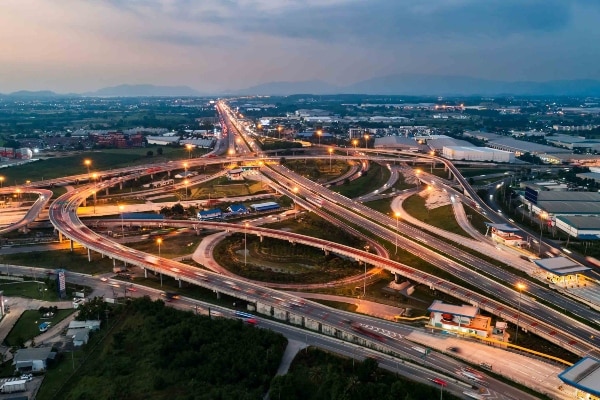-
Featured services
2026 Global AI Report: A Playbook for AI Leaders
Why AI strategy is your business strategy: The acceleration toward an AI-native state. Explore executive insights from AI leaders.
Access the playbook -
Services
Alle Services und Produkte anzeigenNutzen Sie unsere Fähigkeiten, um die Transformation Ihres Unternehmens zu beschleunigen.
-
Services
Network-Services
Beliebte Produkte
-
Services
Cloud
Beliebte Produkte
-
Services
Consulting
-
Edge as a Service
-
Services
Data und Artificial Intelligence
- KI und intelligente Lösungen
- Daten-/KI-Strategie und -Programm
- Data Engineering und Plattformen
- Daten-Governance und -management
- Datenvisualisierung und Entscheidungsfindung
- $name
- GenAI Platforms
- GenAI Industry Services
- GenAI Infrastructure Services
- GenAI Value Transformation
- Data und Artificial Intelligence
-
-
Services
Global Data Centers
-
Beliebte Produkte
-
Services
Application Services
-
Services
Sustainability Services
-
Services
Digital Workplace
-
Services
Business Process Services
-
Services
Generative AI
-
Services
Cybersecurity
-
Services
Enterprise Application Platforms
![]()
IDC MarketScape: Anbieterbewertung für Rechenzentrumsservices weltweit 2023
Wir glauben, dass Marktführer zu sein eine weitere Bestätigung unseres umfassenden Angebotes im Bereich Rechenzentren ist.
Holen Sie sich den IDC MarketScape -
-
Erkenntnisse
Einblicke und RessourcenErfahren Sie, wie die Technologie Unternehmen, die Industrie und die Gesellschaft prägt.
-
Erkenntnisse
Ausgewählte Einblicke
-
Die Zukunft des Networking
-
Using the cloud to cut costs needs the right approach
When organizations focus on transformation, a move to the cloud can deliver cost savings – but they often need expert advice to help them along their journey
-
So funktioniert Zero-Trust-Sicherheit für Ihr Unternehmen
Sorgen Sie dafür, dass Zero-Trust-Sicherheit für Ihr Unternehmen in hybriden Arbeitsumgebungen funktioniert.
-
-
Erkenntnisse
![]()
Copilot für Microsoft 365
Jeder kann mit einem leistungsstarken KI-Tool für die tägliche Arbeit intelligenter arbeiten.
Copilot noch heute entdecken -
-
Lösungen
Alle LösungenWir helfen Ihnen dabei, den Anforderungen an kontinuierliche Innovation und Transformation gerecht zu werden
Global Employee Experience Trends Report
Excel in EX mit Forschung basierend auf Interviews mit über 1.400 Entscheidungsträger:innen auf der ganzen Welt.
Besorgen Sie sich den EX-Report -
Erfahren Sie, wie wir Ihre Geschäftstransformation beschleunigen können
-
Über uns
Neueste Kundenberichte
-
Liantis
Im Laufe der Zeit hatte Liantis, ein etabliertes HR-Unternehmen in Belgien, Dateninseln und isolierte Lösungen als Teil seines Legacysystems aufgebaut.
-
Randstad
We ensured that Randstad’s migration to Genesys Cloud CX had no impact on availability, ensuring an exceptional user experience for clients and talent.
-
-
![Heineken Landing Page]()
NTT DATA und HEINEKEN
HEINEKEN revolutioniert die Mitarbeitererfahrung und die Zusammenarbeit mit einem hybriden Arbeitsplatzmodell.
Lesen Sie die Geschichte von HEINEKEN -
- Karriere
Topics in this article
As manufacturing enters a new era defined by AI-driven automation, it’s clear that the network is no longer just infrastructure — it’s the nervous system of the modern factory.
In a recent IDC webinar with NTT DATA and Cisco, Wired for intelligence: Powering the future of manufacturing with AI-ready networks, we discussed our vision for how manufacturers can overcome long-standing challenges and update their network architectures to unlock the full potential of AI.
A multifaceted set of manufacturing challenges
To set the scene, we outlined the complex set of challenges involved in modernizing operations in manufacturing.
At the top of the list is the persistent divide between IT and OT environments. IT systems are built for flexibility and scale; OT systems prioritize uptime and deterministic control. Manufacturers are often cautious about bridging these domains, mostly because of concerns about control, cost and security rather than technical limitations.
Legacy infrastructure compounds the issue. Poorly designed networks and brownfield equipment don’t have the bandwidth, latency and resilience required for AI workloads. Video streams, control signals and telemetry data compete for bandwidth, demanding deterministic latency and lossless transmission — capabilities that legacy networks can’t deliver. As AI vision-systems and software-defined automation become more prevalent, the strain on networks intensifies.
The opportunity: AI-ready networks as strategic enablers
Despite these hurdles, the opportunity is immense. With AI-ready networks, manufacturers can see what’s happening in their production lines at any time, effortlessly integrate machine data into monitoring and forecasting, and deploy virtual programmable logic controllers (vPLCs) — a flexible, cost-efficient way to control production processes without the need for dedicated hardware.
Modern networks aren’t passive conduits of data. They actively support AI workloads at three critical stages:
- Data acquisition from sensors, machines and production systems
- Model training and tuning, which require high-performance, low-latency infrastructure
- Inferencing: the real-time execution of AI models that support decision-making and automation
By converging IT and OT into a physical network with logical segmentation, manufacturers can strip out cost and complexity while improving performance and security. This convergence also lays the groundwork for future technologies like quantum computing, which will demand entirely new network architectures and processing capabilities.
Collaboration is the catalyst
A strong theme emerging from the webinar is the need for cross-functional collaboration. To deploy AI-ready networks successfully, IT teams must adapt to the zero-downtime demands of OT environments, while OT leaders must embrace the digital-transformation imperative.
Through strategic partnerships that combine hardware, software and services with deep industry expertise, manufacturers can modernize holistically and align infrastructure upgrades with business outcomes and operational realities.
Security at the core: AI as both enabler and defender
As networks become more intelligent and interconnected, the cybersecurity stakes rise. That’s because connecting factory floors to enterprise IT and cloud environments inevitably expands the attack surface.
The good news is that AI can be deployed as a defense mechanism.
Tools like Cisco XDR and Splunk Enterprise Security use AI to ingest telemetry across domains and detect and remediate threats in real time. On the shopfloor, Cisco Cyber Vision groups OT traffic by individual machines. This makes it easier to segment your network precisely, without disrupting operations. And innovations like Cisco Hypershield embed security directly into network hardware, allowing for port-level firewalls and real-time traffic analysis.
This convergence of networking and security creates a unified infrastructure where protection is embedded — not bolted on. The result? Manufacturers can scale innovation without compromising safety.
From factory floors to quantum readiness: A bold vision for the future
We also spent some time exploring why scalability is a critical capability in the AI era. AI workloads generate massive data flows that require networks to scale dynamically — up or down — without disruption. Cloud-level orchestration is still maturing in manufacturing, and it’s becoming a key enabler for managing infrastructure at scale.
And let’s not forget that quantum computing looms on the horizon. While it promises exponential gains in processing power, it will require entirely new network architectures.
This is our bold vision for the future of the industry: factory server-rooms will evolve into mini data centers, equipped with high-capacity central processing unit (CPU) and GPU environments to support AI workloads like vision systems and virtual PLCs. Automation will become software-defined, with deployment resembling DevOps workflows. This will enable rapid updates without hardware refreshes — a vital capability during supply chain disruptions.
The cost of inaction
The risks of delay are real. Legacy systems limit innovation and pose operational and cybersecurity threats due to a lack of vendor support and missing security patches. Manufacturers that fail to modernize risk falling behind competitors who are digitalizing their supply chains and embedding AI into every facet of production.
Today’s infrastructure won’t be fit for purpose. So, modernization isn’t just a strategic advantage; it’s a prerequisite for future business viability.
This article was co-authored by Ruben Lobo, Director of Product Management at Cisco.



